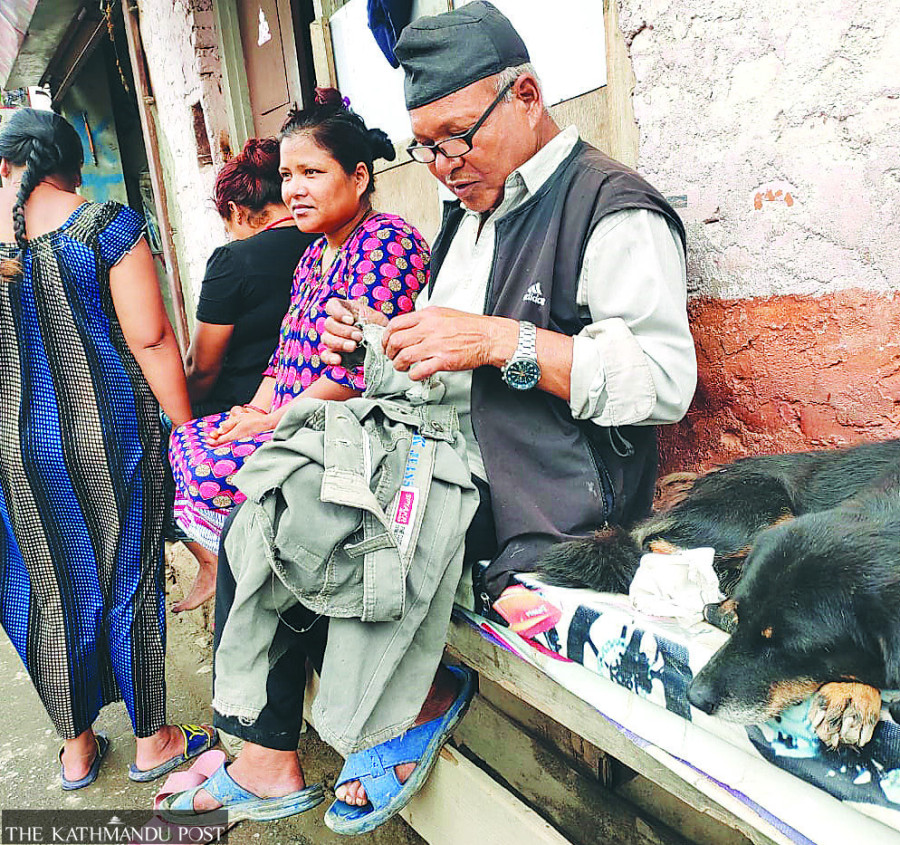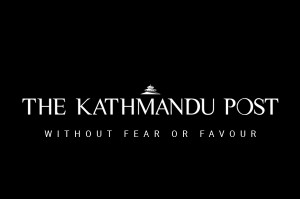Valley
Monsoon means nightmare for riverside squatters in Kathmandu
Thousands of squatter households living along the riverbanks spend sleepless nights throughout the monsoon.
Anup Ojha
On Wednesday noon the rain had almost stopped at the squatter settlement along the Bagmati riverbank at Teku in Kathmandu. Seated on a bench outside his shack, 65-year-old Maila Damai was hemming shorts made out of old trousers while a small radio beside him blared out news on the losses caused by floods and landslides across the country.
“This year is going to be tougher for us. The only thing we can do is pray to God to save our lives,” sighed Damai, who said he has been living in the settlement for the past 40 years.
Every monsoon the squatter settlement of nearly 200 families gets inundated several times by the Bagmati.
“Last year, we had to spend four sleepless nights. My bed, kitchen utensils and the cooking gas cylinder were floating in the floodwaters,” said Damai.
Damai, a father of two sons and two daughters, earns a living by sewing clothes. The sons and daughters help him. “But we are almost jobless since the lockdown started a month and a half ago,” he said.
Stricken by poverty in his home village in Kavrepalanchowk, Damai along with his wife came to Kathmandu four decades ago, settled at the riverbank and raised the family. His wife passed away due to pneumonia in 1999.
“My two daughters were also married here in the slum and live nearby, so when it rains all of us including my in-laws suffer from inundation,” said Damai.
Similar is the condition of Pancha Narayan Maharjan, 65, who has been living in the squatter settlement for the past 20 years with his wife and two sons, and runs a small grocery shop.
“We live in constant fear throughout the rainy season, but nobody cares about our problems. Instead the government wants to chase us away,” he said.
Like Damai and Maharjan, thousands of squatter households living along the banks of Bagmati, Bishnumati, Dhobikhola and Manohara among other rivers spend sleepless nights throughout the monsoon.
Dhan Chemjong, treasurer of Nawa Dristikon Youth Club at Namuna Basti, a squatter settlement along the Bagmati River at Gauri Gaun, Sinamangal, says over 100 families in ward 31 of the Kathmandu Metropolitan City are at higher risk of flood.
“A few settlements are quite safe due to the embankment, but many others could be swept away if the river swelled to dangerous levels,” said Chemjong.
Meanwhile, at the squatter settlement at Thapathali, Chandra Tamang, the chairman of a squatter committee, said their biggest fear is the rainy season. “Just like every year, our people will be spending sleepless nights for several weeks and months.”
According to Tamang, there are 136 squatter households with a total population of 616 at Thapathali.
Meanwhile, the Nepal Landless Democratic Union Party, which advocates the cause of squatters, informed that more than 29,000 landless people in Kathmandu Valley livie in 73 settlements. Of them, 1,082 families were registered as squatters in 2012. The party’s report shows over 8,000 families are living along the Bagmati riverbanks alone.
Eighty percent of the total squatters live on riverbanks in Kathmandu, Bhaktapur and Lalitpur, according to the party.




 8.12°C Kathmandu
8.12°C Kathmandu.jpg)











